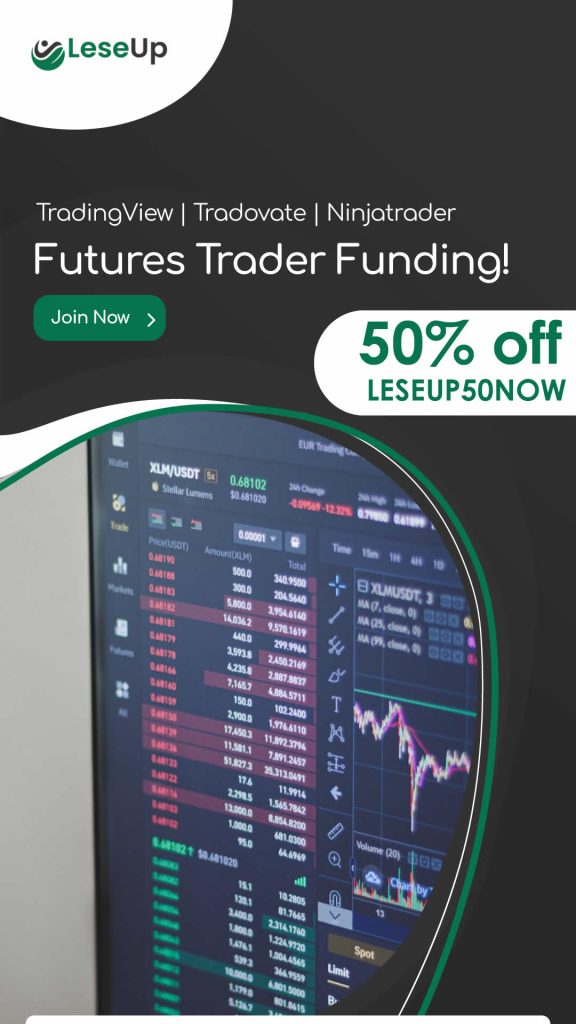The London Metal Exchange (LME) stands as the world’s central hub for industrial metals futures and options trading, setting the pace for metal prices globally. Delve into the rich history, operations, and profound influence of the LME on industry trends, as well as the trading opportunities and risks it presents
Key Takeaways
- The London Metal Exchange (LME) is a central marketplace for metals futures and options trading, facilitating financial transactions for a wide array of metals.
- The LME has a long history, dating back to its founding in 1877, and has played a significant role in shaping the global metal trade.
- The LME has evolved over time, adapting to technological advancements and regulatory changes, while maintaining its position as a leading global metal futures exchange.
- The LME influences global metal prices and availability, reflecting supply and demand factors linked to economic trends and industry-specific factors. It also provides price signals, facilitates hedging strategies, and influences commercial decision-making across supply chains.
Understanding the Role of the London Metal Exchange
The London Metal Exchange plays a pivotal role in global trade as it serves as the central marketplace for metals futures and options trading. This platform facilitates financial transactions related to a wide array of metals, including but not limited to aluminium, copper, and zinc. It operates through an elaborate system of metal warehousing and commodity speculation.
Metal warehousing forms an integral part of the LME’s operations. These facilities store physical metals that underpin contracts traded on the exchange. The robust network of LME-approved warehouses located across the globe ensures seamless delivery upon contract settlement, thereby maintaining market integrity. Moreover, these warehouses provide crucial inventory data that influence price discovery processes on the exchange.
Commodity speculation is another critical aspect of the LME’s functions. Participants speculate on future price movements to profit from potential discrepancies between current prices and forecasted values. Such speculation brings liquidity into the market by attracting diverse participants with different risk appetites – hedgers seeking price stability; speculators thriving on price volatility; arbitrageurs exploiting price differentials.
Despite its complexity, understanding this interplay between metal warehousing and commodity speculation is fundamental to grasp how pricing mechanisms at the LME work. Changes in warehouse stocks can significantly impact supply-demand dynamics in global metal markets thereby affecting prices; concurrently, speculative activities can induce short-term price fluctuations independent of underlying physical fundamentals.
A Brief History of the LME
The London Metal Exchange (LME), founded in 1877, has underpinned the global trade of industrial metals with profound implications for economies around the globe.
A discussion of early trading practices reveals an exchange rooted in physical trading where open outcry and face-to-face negotiation were prevalent, ensuring transparency and immediacy in transactions.
Over time, however, the LME has evolved significantly to accommodate technological advancements and regulatory changes, reflecting not only its resilience but also its capacity to shape and respond to market dynamics.
LME’s Founding
Established in 1877, London Metal Exchange emerged as a global hub for metal trading, significantly influencing the prices of metals worldwide. However, its founding was not without challenges. The initial structure underwent numerous alterations to accommodate the complexities of international trade.
The LME’s early years were marked by rapid expansion due to industrial growth, fluctuating metal prices affecting market stability, regulatory adjustments necessary for fair trading practices, and technological advancements redefining operational processes.
Despite these hurdles, the Exchange demonstrated resilience and adaptability. It managed to sustain operations through turbulent economic periods and emerged as an essential institution in setting metal prices globally.
Undoubtedly, understanding LME’s founding challenges provides key insights into its formative strategies that have shaped its robust structure today.
Early Trading Practices
Early trading practices at the global hub for metal trading were characterized by face-to-face interactions, marked by a distinct ‘ring’ or circular formation of traders. These origins can be traced back to Medieval Metal Trading when transactions were largely based on trust and physical presence. In this ring format, bids and offers were made openly, creating a transparent market mechanism that facilitated fair pricing.
However, such practices also brought about Early Exchange Challenges. The absence of advanced technology meant the exchange was susceptible to human errors in recording transactions. Furthermore, reliance on physical presence restricted participation to local traders only. This lack of diversity could lead to skewed price discovery mechanisms that did not reflect true global demand and supply conditions for metals.
Evolution Over Time
Over time, advancements in technology and changes in global trade dynamics have significantly transformed the traditional practices of metal trading. The London Metal Exchange (LME) has adapted to these shifts by adopting advanced trading platforms, resulting in increased efficiency and transparency.
However, this evolution was not without its regulatory challenges; adherence to stringent international regulations became an imperative aspect of operations. The exchange had to implement robust compliance systems to meet the evolving demands of financial market regulation.
Furthermore, technological advancements brought about algorithmic trading and data analysis tools that revolutionized decision-making processes within the LME.
Thus, while posing certain complexities, these transformations have ultimately fortified the LME’s position as a leading global metal futures exchange.
How the LME Operates: Key Functions Explained
The functionality of the London Metal Exchange (LME) is based on several key operations, which include setting metal prices, facilitating hedging activities, and providing a physical market for metals.
Daily, the LME sets global benchmark prices for metals that drive international trade. Moreover, it plays a crucial role in risk management by enabling market participants to hedge against potential price fluctuations through derivative contracts. The LME also maintains a robust physical market where actual metals are bought and sold.
Notwithstanding its vital role in global finance, the LME faces certain operational challenges. Rapidly evolving regulatory environments necessitate constant adaptation. Increasing competition from other exchanges demands constant innovation. Technological advancements require continuous investment in infrastructure and cybersecurity measures.
These challenges underscore a critical need for strategic planning and effective governance at the LME.
Technological advancements have significantly impacted how the LME operates. Automation has streamlined trading processes while advanced data analytics tools have enhanced price forecasting accuracy. On another front, blockchain technology promises improved efficiency and transparency in tracking metal supply chains – an increasingly important consideration given growing concerns about ethical sourcing of minerals.
Nevertheless, with these advancements come new risks; cyber threats are an ever-present danger requiring vigilance and substantial investment in security infrastructure.
Trading Metals on the LME: A Comprehensive Guide
Trading metals encompasses a variety of strategies and methods, necessitating a comprehensive understanding for successful engagement in this complex market. The London Metal Exchange (LME) holds the position as the world’s leading metal futures exchange, making it an integral part of global trade.
In terms of market dynamics, close observation of international trade patterns is vital. For instance, demand trends for industrial metals often reflect economic development levels in major economies. A surge in infrastructure projects usually triggers increased demand for steel, copper and aluminium. Likewise, fluctuations in supply can be influenced by geopolitical events or natural disasters affecting mining operations.
Trading strategies on LME are diverse and can be tailored according to individual risk tolerance and investment objectives. One common approach is hedging against price volatility using futures contracts. Traders may also employ speculative strategies aiming to profit from price movements based on careful analysis of market data.
In further complexity, trading on LME involves more than just buying or selling physical metals. It also includes trading derivative products such as options and warrants which derive their value from underlying metal assets. Understanding these instruments requires not only familiarity with the basic principles of derivatives but also knowledge about specific characteristics unique to each type of metal traded.
To engage successfully in metal trading on LME, one should possess sound knowledge of financial markets along with proficient skills to analyse and interpret complex financial data effectively. This will enable informed decision-making amid the challenging dynamics inherent within this intricate marketplace.
The Influence of the LME on Global Metal Prices
Influential in shaping global metal prices, this prominent marketplace impacts the cost and availability of key materials used in manufacturing and construction industries worldwide. The London Metal Exchange (LME), with its Global Influence, serves as a central hub for traders, investors, producers, and consumers across various countries. This institution’s role in setting benchmark prices reflects Price Determinants such as supply and demand factors that are intricately linked with economic trends.
The following table presents three main categories of Price Determinants:
| Category | Example | Impact on Prices |
|---|---|---|
| Macro-Economic Factors | GDP growth rates, Inflation rates | Strong economic growth typically leads to increased demand for metals which can push up prices. Higher inflation can also lead to higher metal prices. |
| Industry-specific Factors | Changes in production levels or new mining technologies | These factors directly impact the supply of metals available which can influence prices. |
| Geopolitical Events | Trade wars or political instability | Such events can disrupt the supply chain leading to price volatility. |
Understanding these determinants provides vital context for analysing price fluctuations on the LME. It is crucial to acknowledge how elements such as macro-economic indicators, industry-specific changes or geopolitical events influence these dynamics.
Summarily, it becomes clear that the LME’s function extends beyond being a mere trading platform; it embodies a comprehensive system where global economic conditions intersect with sectoral trends affecting metal commodities’ cost structure. Henceforth, any stakeholder keen on comprehending this complex interplay must consider both the overarching Global Influence of this exchange and specific Price Determinants at play.
Exploring the LME’s Impact on the Metal Industry
The pivotal role of the London Metal Exchange (LME) in shaping the global metal industry represents a key area of examination.
It is instrumental to explore how LME, as a significant node in financial markets, can affect industry changes by providing critical price signals and facilitating hedging strategies; these actions invariably influence commercial decision-making across supply chains.
An investigation into drivers inducing shifts within this sector becomes crucial for understanding the nuanced interplay between such macro-financial dynamics and their microeconomic implications on individual firms and stakeholders.
LME’s Role
Establishing global standards for metal trading constitutes a critical aspect of the London Metal Exchange’s (LME) role. As the world’s leading metal futures exchange, the LME exerts substantial regulatory oversight in this domain to ensure transparency and integrity.
Key Functions of the LME:
- Regulatory Oversight: The LME sets international rules and regulations for metal trading, ensuring market efficiency and fairness.
- Metal Speculation: It provides a platform for speculating on future metal prices thus aiding in risk management.
- Other Roles: Besides regulating, it also facilitates physical trading and warehousing of metals.
In-depth analysis reveals that these functions are crucial for fostering trust among market participants while driving robustness in financial markets. Therefore, understanding LME’s role is essential for comprehending complexities associated with global metal trade dynamics.
Industry Change Drivers
Several factors drive changes in the industry, including:
- Technological advancements
- Regulatory shifts
- Evolving market demands
Digital transformation has become an influential change driver within the London Metal Exchange (LME). This modernization process involves a shift from traditional operations to digital platforms that leverage algorithms and data analytics to optimize trade execution and compliance procedures.
Another significant factor is sustainability efforts, which aim at promoting responsible sourcing of metals and reducing environmental impacts.
Regulatory shifts also play a crucial role, compelling LME towards more transparent trading practices to instill investor confidence.
Understanding these drivers allows stakeholders to appreciate how financial markets like LME adapt amid ever-changing economic landscapes for continued success.
The LME’s Role in Shaping Future Metal Market Trends
Influential decisions made by the London Metal Exchange play a significant role in shaping future metal market trends. As the world’s foremost non-ferrous metals marketplace, LME’s trading strategies and policies significantly influence global price discovery processes. The exchange’s market predictions and forecasting models offer valuable insights into future demand-supply dynamics of various metals.
With a diverse portfolio encompassing base, minor, precious metals and ferrous commodities, LME provides a comprehensive platform for hedging against price risks. Its ability to facilitate both physical delivery and cash settlement trades offers flexibility to participants while enhancing liquidity.
The futures contracts traded on the LME are critical tools for risk management. By locking in prices for future delivery dates, these instruments enable businesses to negotiate contracts with certainty about the cost of raw materials. This aspect gains importance considering the cyclical nature of metal markets wherein periods of oversupply can lead to sharp price declines.
LME’s prompt-date structure is unique among commodity exchanges; it allows trading up to three months in daily dated futures, weekly contracts up to 6 months and monthly contracts up to 123 months ahead. This feature provides opportunities for granular risk management across different time horizons.
Moreover, adjustments in LME’s warehousing policy have implications on global metal stock levels which subsequently impacts prices. For instance, changes aimed at reducing load-out queues can potentially ease supply bottlenecks thereby moderating any upward pressure on prices.
Opportunities and Risks Associated With LME Trading
Trading on the globally recognized commodities marketplace presents both opportunities and risks, which must be carefully assessed and managed by participants.
The London Metal Exchange (LME), as a prime example of such a market, offers attractive prospects for profit maximization tactics through its diverse products portfolio including futures and options contracts on metals like aluminium, copper, nickel among others.
The LME provides an avenue for hedging against price fluctuations – a key risk mitigation strategy. By locking in future prices via derivatives trading, investors can shield themselves from adverse market movements. Furthermore, the LME offers transparency due to its highly regulated nature and standardized contract specifications. This promotes market integrity and fosters investor confidence.
However, inherent risks persist in any financial market activity. Commodities trading is complex and requires sound understanding of global economic indicators that influence metal prices such as supply-demand dynamics or geopolitical situations. Additionally, systemic risks can arise from sudden shifts in monetary policies or macroeconomic shocks causing significant price volatility.
Highly leveraged positions might amplify profits but simultaneously escalate potential losses should markets move unfavorably. Hence it becomes vital to explore risk diversification strategies too – not placing all investment eggs into one basket.
Moreover, while LME’s global presence facilitates round-the-clock trading bridging various time zones; it also implies dealing with foreign exchange risks if trades involve different currencies.
In conclusion: effective participation in the LME mandates comprehensive knowledge about underlying assets; robust risk management framework incorporating both risk mitigation strategies & profit maximization tactics; constant monitoring of global economic trends impacting metal prices; besides adhering to regulatory compliances within this volatile yet rewarding marketplace.
Case Studies: Successful Trades on the LME
Examining real-world instances of successful transactions within the commodities marketplace offers valuable insights into effective trading strategies and risk management techniques. The London Metal Exchange (LME), a prime venue for metal futures trading, has witnessed numerous such cases that exemplify adept navigation of market fluctuations.
One notable instance involves the strategic purchasing of aluminium futures in anticipation of tighter trade regulations. By meticulously analysing global economic trends, the trader foresaw potential supply disruptions due to regulatory changes. Consequently, long positions were established on LME’s aluminium contracts ahead of these changes, resulting in significant profit when prices surged as predicted.
Another example concerns copper trading during periods of extreme volatility. Despite wide price swings, a seasoned market participant managed to capitalise on these market fluctuations through a combination of technical analysis and prudent risk management. This included setting stop-loss orders to limit potential losses while taking advantage of sudden price movements to secure profitable trades.
These case studies underline the importance of understanding both macroeconomic factors and specific commodity characteristics when participating in LME trading. They underscore how adherence to trade regulations and acute awareness of market fluctuations can guide decision-making processes for lucrative outcomes.
Frequently Asked Questions
What Kind of Qualifications or Certifications Are Required to Trade on the Lme?
Trading on the London Metal Exchange necessitates certain qualifications and certifications. Predominantly, a profound understanding of financial markets is required, including expertise in analyzing and interpreting financial data. Familiarity with trading platforms is also essential. Additionally, knowledge about margin requirements is indispensable as it forms a crucial aspect of futures trading.
Obtaining relevant certification that validates these skills can enhance credibility and foster better trading opportunities on such globally recognized exchanges.
How Does the LME Ensure the Ethical Sourcing of Metals Traded on the Exchange?
The London Metal Exchange ensures the ethical sourcing of metals traded on its platform through stringent procedures.
It employs Metal Authenticity Verification processes to confirm the origin and legitimacy of all traded commodities.
Ethical Mining Practices are also promoted, mandating suppliers to adhere to responsible mining and labor practices.
These measures facilitate the assurance of ethically sourced metals, contributing towards maintaining market integrity while promoting sustainable trading practices in global metal futures markets.
Can Individuals Trade on the LME or Is It Solely for Corporations and Large Entities?
The London Metal Exchange (LME) primarily facilitates trading for corporations and large entities due to its complex and high-volume nature. Although individual participation is not explicitly prohibited by LME’s regulations, the exchange’s accessibility can be daunting for individual traders.
It is predominantly designed for institutional investors who possess in-depth knowledge of financial markets and can interpret complex financial data. Therefore, while technically possible, individual trading on the LME is uncommon and challenging.
What Are the Environmental Impacts of Metal Futures Trading on the Lme?
Metal futures trading impacts the environment indirectly. While such transactions themselves are intangible, they influence real-world extraction and consumption of finite resources.
For instance, heightened trading can stimulate increased mining activity, potentially exacerbating environmental degradation. Conversely, the LME’s sustainability measures aim to mitigate these effects by promoting responsible sourcing and transparency in supply chains.
Yet, assessing the full environmental impact of futures trading requires a comprehensive understanding of complex market dynamics and their ripple effects on global ecosystems.
Does the LME Offer Educational Resources or Training Programs for New Traders?
The London Metal Exchange provides a wealth of resources for novice traders, encompassing educational materials and training programs. These resources are tailored to equip participants with comprehensive understanding of trading strategies and risk management.
They facilitate the development of in-depth knowledge about financial markets, analysis, and interpretation of complex financial data. Thus, this provision aids individuals in navigating the intricacies associated with metal futures trading on a global scale.
The LME Legacy in Global Metal Trading
The London Metal Exchange (LME) remains an integral force in the realm of global metal trading and pricing. Its profound influence on industry trends and the myriad of trading opportunities it offers cannot be understated. As we navigate the complexities of the financial world, the LME’s significance and enduring relevance in the metals market landscape is undeniable.





